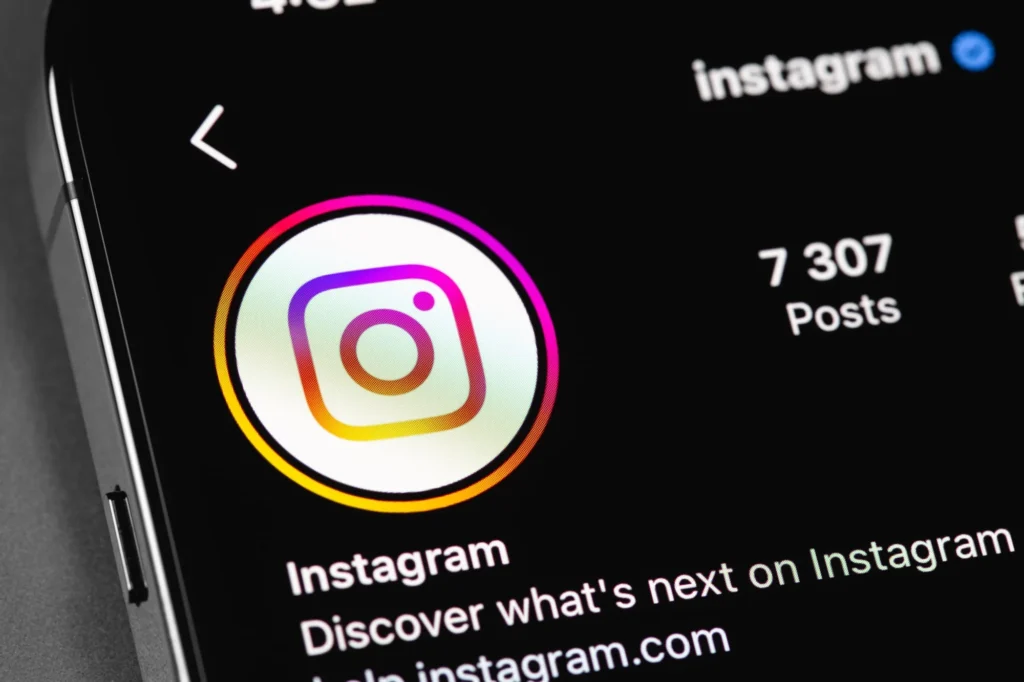How to Create Instagram Guides to Drive Sales
In the dynamic realm of digital marketing, Instagram Guides emerge as a pivotal tool for businesses aiming to boost their online visibility and sales. These guides allow brands to creatively showcase their products and services while managing customer interactions effectively, especially during crisis scenarios. By curating content into themed guides, businesses can ensure consistent communication, aligning with their social media crisis management strategies. This not only helps in maintaining a strong brand reputation during challenging times but also supports effective internal communication and post-crisis analysis. Through strategic use of Instagram Guides, companies can navigate potential crises and enhance engagement, turning challenges into opportunities for growth.
This summary includes key query terms like “social media crisis management,” “brand’s reputation,” and “crisis response strategy,” focusing on how Instagram Guides can be strategically used for business advancement and effective crisis management. If you need further details or adjustments, let me know how you’d like to refine it!

Enhancing Brand Resilience with Instagram Guides
In the fast-paced realm of social media, where crises can escalate rapidly, having a robust social media crisis management strategy is crucial. Instagram Guides offer businesses a powerful tool to not only showcase their products but also to preemptively address potential crises and manage ongoing situations effectively. These guides can serve as a cornerstone of a company’s crisis communication plan, allowing for the structured dissemination of information and maintaining control over the narrative during a social media crisis.

Key Points:
- Strategic Preparedness: Instagram Guides can be integral to a social media crisis plan, readying businesses to act swiftly and effectively when a crisis hits the social media channels.
- Content Curation: Carefully curated guides help manage and mitigate negative sentiments that might arise during a crisis, ensuring the brand’s reputation is upheld.
- Engagement and Monitoring: By regularly updating guides and monitoring social media responses, businesses can stay ahead of potential crises and respond promptly to negative comments or feedback.
Step-by-Step Guide Creation Process for Crisis Management
Creating Instagram Guides as a part of your social media crisis management strategy involves careful planning and execution. This section outlines the steps necessary to create Guides that not only engage but also protect and enhance your brand’s reputation during a crisis.

1. Planning Your Content
- Objective Identification: Determine what the Guide aims to achieve in the context of crisis management. Whether it’s to address common concerns, provide updates during an ongoing crisis, or educate on preventive measures, having a clear goal is crucial.
- Content Gathering: Collect and organize content that aligns with the identified objectives. This includes selecting relevant social media posts, articles, or user-generated content that can help address the crisis effectively.
2. Choosing the Right Type of Guide
- Crisis Response Guides: Create Guides specifically designed for crisis response which can include FAQs, tips on handling the crisis, or updates on the situation.
- Product or Service Updates: For product-related crises, Guides can be used to clarify misinformation, share safety information, or updates about product recalls.
3. Structuring Your Guide
- Clear and Concise Titles: Use titles that clearly indicate the content of the Guide, helping users find the information they need quickly during a crisis.
- Detailed Descriptions: Each section of the Guide should have a detailed description that provides additional context, addressing concerns and showcasing the company’s response to the crisis.
4. Designing for Engagement
- Visual Consistency: Maintain a consistent visual theme throughout the Guide to ensure it is easily recognizable and aligns with your brand’s identity.
- Interactive Elements: Incorporate interactive elements such as links to official press releases or external media coverage, enhancing the credibility and informational value of the Guide.
5. Publishing and Accessibility
- Easy Accessibility: Ensure that the Guide is easily accessible from your main Instagram page and consider pinning it to the top during a crisis for easy visibility.
- Cross-Platform Sharing: Share the Guide across other social media platforms to reach a wider audience, ensuring that all stakeholders receive the necessary information quickly.
6. Regular Updates and Monitoring
- Ongoing Updates: Regularly update the Guide with new information as the situation evolves. This can include new data, responses to user queries, or changes in the crisis status.
- Engagement Monitoring: Monitor engagement with the Guide to gauge its effectiveness and gather insights on public sentiment and response. Use this data to refine future communications and improve crisis management strategies.
By following these steps, businesses can effectively use Instagram Guides as a dynamic tool in their social media crisis management toolkit, ensuring they are prepared to handle crises with confidence and maintain their reputation online.
Optimizing Content for Engagement and Crisis Communication
Effectively optimizing content within Instagram Guides can play a critical role in managing social media crises, ensuring that your messaging not only engages but also reassures your audience. Here’s how to refine your content for both engagement and effective crisis communication.
1. Tailoring Content to Audience Needs
- Relevance and Resonance: Ensure the content is highly relevant to your audience’s needs, especially during a crisis. Tailor information to address specific concerns, dispel rumors, and provide clear, factual updates.
- User-Centric Approach: Design content that puts the user’s needs and questions first. This includes using empathetic language and providing actionable advice that can help alleviate concerns during a crisis.
2. Enhancing Content Clarity and Accessibility
- Clear, Concise Information: In a crisis, clarity is key. Use simple, direct language to ensure that your messages are understandable at a glance. Avoid jargon or complex terms that might confuse your audience.
- Accessible Formats: Make your guides accessible to all users, including those with disabilities. Use alt text for images, provide captions for videos, and ensure that text contrasts are adequate for readability.
3. Incorporating Trust Elements
- Official Statements and Data: Use your Guides to share official statements, updates, and data directly related to the crisis. This can help in establishing your brand as a reliable source of information.
- Verification and Sources: Provide links to verified sources and additional resources. This not only helps in reinforcing the credibility of the information but also offers users a way to explore the topic further if they wish.
4. Utilizing Visuals Effectively
- Informative Visuals: Use charts, infographics, and visuals that can help explain complex information easily and quickly. Visual aids can be particularly effective in crisis situations where time and clarity are of the essence.
- Consistent Branding: Maintain consistent visual branding across all Guides to strengthen brand recognition and trust. This includes using your brand’s color scheme, logos, and visual style.
5. Strategic Use of Calls-to-Action (CTAs)
- Guidance and Direction: Provide clear CTAs that guide users on what to do next. During a crisis, CTAs such as “Learn More,” “Get Help,” or “Contact Us” can direct users to the necessary support or next steps.
- Feedback and Interaction: Encourage feedback and interaction by asking users to leave comments, share the guide, or reach out via direct messaging. This can provide valuable insights into the audience’s perception and help in further tailoring the crisis response.
By optimizing the content of your Instagram Guides with these strategies, you can ensure that your communication during a social media crisis is not only effective but also strengthens your relationship with your audience, reinforcing your brand’s reputation for reliability and responsiveness.
Promoting Your Instagram Guides During a Crisis
To ensure your Instagram Guides reach the maximum number of people and effectively communicate during a crisis, promoting them strategically is crucial. Here’s how to enhance visibility and ensure your messages are received by the appropriate audience.

1. Utilize All Social Media Channels
- Cross-Platform Sharing: Promote your Guides not only on Instagram but across all relevant social media platforms where your audience is active. This helps in reaching users who may not be frequent Instagram users.
- Consistent Messaging: Ensure that the messaging across platforms is consistent. This avoids confusion and reinforces the message through repetition.
2. Engage with Influencers and Community Leaders
- Influencer Collaboration: Partner with influencers who have credibility and a substantial following within your target audience. Their endorsement can lend additional credibility and extend the reach of your Guides.
- Community Leaders: Engage local community leaders or niche community groups that are respected and have the trust of your audience. They can help disseminate information quickly and effectively.
3. Leverage Instagram’s Features
- Instagram Stories: Use Stories to promote your Guides by providing highlights or key takeaways that can pique interest and direct followers to the full Guide.
- Instagram Ads: Consider using Instagram ads targeted to specific demographics or interests that align with your crisis communication goals. These can be particularly effective in reaching a broader or more targeted audience.
4. Interactive Engagements
- Live Sessions: Host Instagram Live sessions to discuss the content of your Guides. This can also be a platform to address questions in real-time, providing clarity and further engaging your audience.
- Q&A Sessions: Use the Q&A feature in Stories to invite questions about the crisis and answer them, directing followers to your Guides for more detailed information.
5. Email and External Communication Channels
- Email Newsletters: Send out an email blast to your subscribers with links to your Guides. Emails can provide a direct line of communication to those who may not be active on social media.
- Collaboration with External Media: Reach out to media outlets that can help amplify your message. This includes traditional media and online publications that are relevant to your audience.
6. Regular Updates and Reminders
- Keep Content Fresh: Regularly update your Guides with new information as the crisis evolves. This keeps your audience informed and ensures that your Guides remain relevant.
- Reminders: Periodically remind your audience of the Guides’ existence via posts and Stories. This is crucial as new followers may not be aware of resources created earlier.
By promoting your Instagram Guides effectively, you ensure that critical information reaches your audience efficiently during a crisis, helping to manage the situation proactively while maintaining your brand’s integrity and trustworthiness.
Monitoring and Updating Your Instagram Guides in Crisis Situations
Once your Instagram Guides are live, ongoing monitoring and regular updates are vital to ensure they continue to serve their intended purpose during a crisis. Here’s how to effectively manage and refine your Guides post-launch.

1. Monitor Engagement and Feedback
- Track Engagement Metrics: Use Instagram’s built-in analytics to monitor how your Guides are performing in terms of views, likes, shares, and comments. High engagement rates can indicate that the content is relevant and well-received.
- Gather User Feedback: Pay attention to comments and direct messages to gather feedback from your audience. This can provide insights into what information is helpful, what needs clarification, or additional topics of interest.
2. Update Content Regularly
- Timely Updates: As the situation evolves, update your Guides to reflect the latest information and developments. This ensures that your audience always has access to the most current data and advice.
- Add New Sections: If new aspects of the crisis emerge, add new sections to your Guides to address these developments. Keeping your content comprehensive and up-to-date is key to maintaining its usefulness.
3. Re-promote Updated Content
- Announce Updates: Whenever you update a Guide, announce this on your Instagram feed and other social media channels to inform your audience. Highlight what’s new and encourage followers to revisit the Guide for the latest information.
- Use Stories for Reminders: Regularly use Instagram Stories to remind your audience about the Guide, especially highlighting any updates or new additions. This keeps the Guide top of mind for your followers.
4. Respond to Changes in Sentiment and Trends
- Sentiment Analysis: Utilize tools for sentiment analysis to gauge public opinion and emotional reactions to the crisis and your Guides. Adjust your content strategy based on this feedback to better meet your audience’s needs.
- Adapt to Social Media Trends: Keep an eye on trends that might affect how your Guides are perceived or discovered. Adapting to these trends can help keep your Guides relevant and engaging.
5. Maintain Transparency and Build Trust
- Clear Communication: Always communicate clearly and transparently with your audience about any updates or changes to your Guides. Trust is crucial, especially in crisis management.
- Document Changes: For transparency, consider adding a changelog or an “updates” section to your Guides, where you document what changes have been made and why. This can help track the evolution of the crisis and your response over time.
By actively monitoring, updating, and re-promoting your Instagram Guides, you can ensure they remain an effective tool for managing communication during a crisis. This approach not only helps in stabilizing the immediate situation but also supports long-term recovery and trust-building with your audience.
Conclusion: Fortifying Business Resilience Through Instagram Guides
Instagram Guides serve as a versatile and strategic tool for managing brand communication, especially during social media crises. By thoughtfully creating, promoting, and maintaining these Guides, businesses can navigate the complexities of crisis management while enhancing their engagement and maintaining trust with their audience.
Key Takeaways:
- Proactive Crisis Management: Instagram Guides allow businesses to proactively address potential and ongoing crises, providing clear and authoritative content that helps manage public perception and mitigate the impact of negative sentiments.
- Enhanced Engagement: Through well-crafted Guides, businesses can keep their followers informed and engaged, offering them a streamlined source of information that is both accessible and reliable.
- Continuous Improvement: The dynamic nature of Instagram Guides necessitates ongoing monitoring and updating to respond to new developments or changes in public sentiment. This ensures that the Guides always reflect the most current and relevant information.
- Building Long-Term Trust: By consistently using Instagram Guides to communicate effectively during crises, businesses can build and maintain long-term trust with their audience, reinforcing their reputation as reliable and responsive.
Future Directions:
- Leverage Emerging Trends: Businesses should stay attuned to emerging trends and technological advancements in social media to continually enhance the effectiveness of their Instagram Guides.
- Expand Audience Reach: Expanding the reach of Instagram Guides through cross-promotion and collaboration can further enhance their effectiveness as a crisis management tool.
- Incorporate Feedback Loops: Establishing mechanisms for feedback within the Guides can provide valuable insights that help refine strategies and content, ensuring they remain aligned with user needs and expectations.
In conclusion, Instagram Guides are more than just a content format; they are a critical component of a sophisticated digital strategy that, when used effectively, can significantly contribute to a business’s ability to manage crises and maintain a strong, positive brand presence online. By investing in this tool, companies not only enhance their immediate crisis response capabilities but also strengthen their overall digital resilience and customer relationships.
Disclosure: Our blog contains affiliate links to products. We may receive a commission for purchases made through these links. However, this does not impact our reviews and comparisons. We try our best to keep things fair and balanced, in order to help you make the best choice for you.






